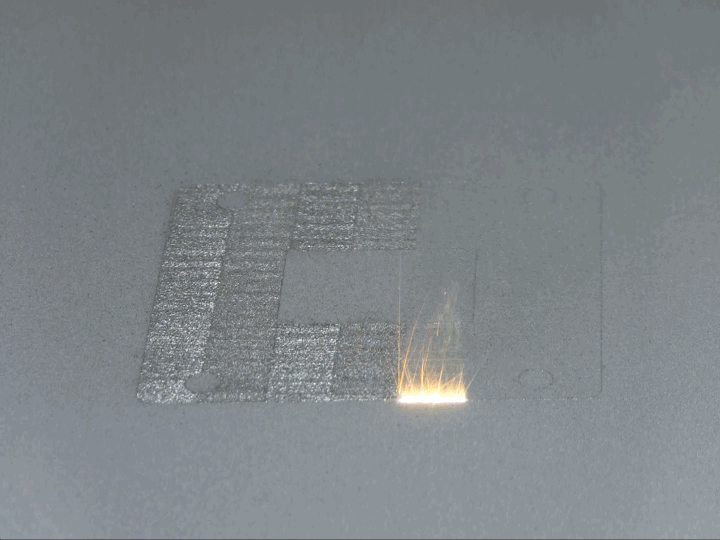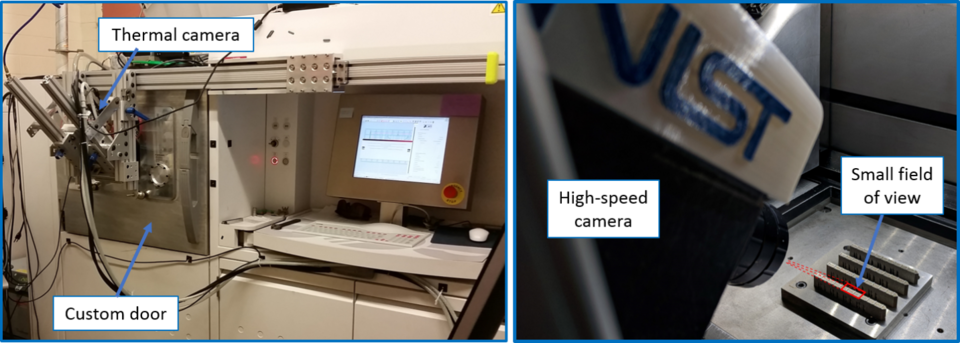LPBF Thermography
Laser Powder Bed Fusion Thermography
Summary

The purpose of this website is to provide measurement data that can be used to validate models of LPBF. These models, which are currently being developed by academia and industry, are necessary for predicting the final part quality (stress, distortion, microstructure). Only after these models are validated will industry trust and use them to save time and money when developing new manufacturing processes.
The rest of this page provides a brief summary of the LPBF thermography system, experiments performed, and links to relevant webpages and publications.
System Overview
The commercial LPBF system has a maximum laser power of 195 W, creates parts in 0.02 mm layers, and typically operates with scan speeds around 1 m/s. Depending on the objective of each experiment, the power and speed may vary.
This system has been modified to enable in situ measurement of the process. The most significant modification is the custom door on the build chamber. This door has a viewport that allows a high-speed camera to be places as close to the build surface as possible without interfering with laser path or recoating mechanism.
Typically, a thermal camera with a frame rate of 1800 frames per second is mounted to the machine to measure the infrared radiation emitted by the part and allow the thermal history of each layer to be determined. However, the system is designed to accommodate different types of cameras. The camera specifications used for each experiment are provided in the experiment descriptions.
In addition to the high-speed camera, various other sensors, such as photodetectors, thermocouples, and microscopic layer-by-layer imaging systems are incorporated. Please refer to each experiment for details on the measurements performed.


